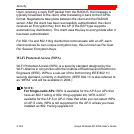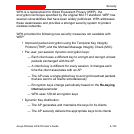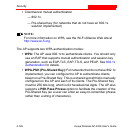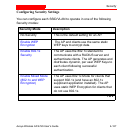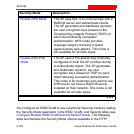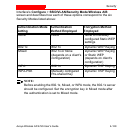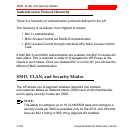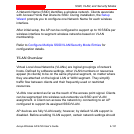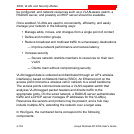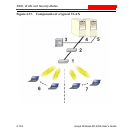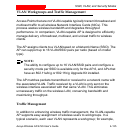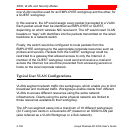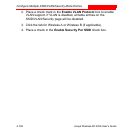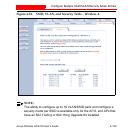
SSID, VLAN, and Security Modes
4-132 Avaya Wireless AP-4/5/6 User’s Guide
be configured, and network resources such as a VLAN-aware switch, a
RADIUS server, and possibly a DHCP server should be available.
Once enabled, VLANs are used to conveniently, efficiently, and easily
manage your network in the following ways:
• Manage adds, moves, and changes from a single point of contact
• Define and monitor groups
• Reduce broadcast and multicast traffic to unnecessary destinations
— Improve network performance and reduce latency
• Increase security
— Secure network restricts members to resources on their own
VLAN
— Clients roam without compromising security
VLAN tagged data is collected and distributed through an AP's wireless
interface(s) based on Network Name (SSID). An Ethernet port on the
access point connects a wireless cell or network to a wired backbone.
The access points communicate across a VLAN-capable switch that
analyzes VLAN-tagged packet headers and directs traffic to the
appropriate ports. On the wired network, a RADIUS server authenticates
traffic and a DHCP server manages IP addresses for the VLAN(s).
Resources like servers and printers may be present, and a hub may
include multiple APs, extending the network over a larger area.
In this figure, the numbered items correspond to the following
components:



